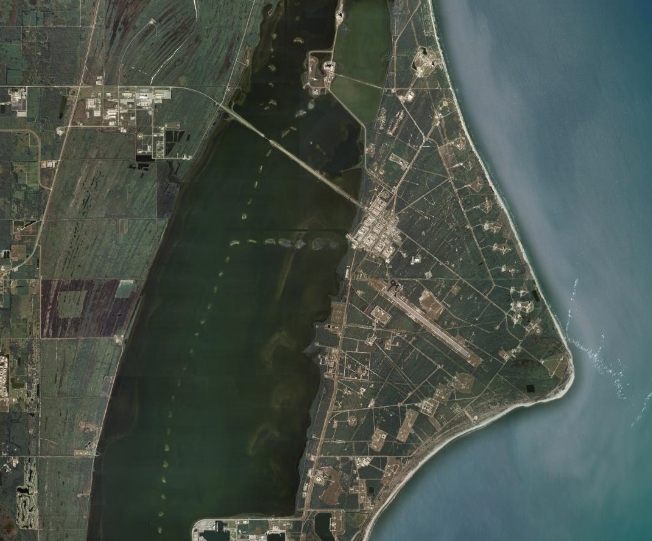[/caption]
Topical Storm Fay has made landfall along Florida’s southwest coastline and is working inland. Officials at NASA’s Kennedy Space Center have decided to close down operations for 24 hours as a precautionary measure. Kennedy’s 15,000 staff have been instructed to stay at home, although a small number of emergency personnel remain on site to monitor the storm’s effect on the space complex. The Kennedy Visitor Center has also been closed. Fay had been forecast to make landfall as a much more powerful entity and there were concerns that the winds could reach hurricane force, but fortunately it remained classified as a tropical storm and damage has been limited…
So far Fay hasn’t been the monster some meteorologists thought she could be. Building up energy from the Atlantic Ocean, Fay was beginning to look like she could become a hurricane by the time she hit the Florida peninsula. But no, Tropical Storm Fay did not fulfil the predictions, but she is dumping a lot of rain and sustaining winds of up to 65 miles per hour (105 km/h), causing minor damage and a lot of mess. According to news sources, the southern town of Everglades City suffered minor flooding due to a small storm surge (a localized increase of sea level associated with a low pressure region) and there are some downed trees. Electricity still seems to be supplying the remaining residents and there are no reports of serious injuries.
But what of Kennedy Space Center? There is currently a skeleton crew of 200 personnel called the “ride-out crew” keeping a close eye on any damage to the site. Kennedy managers are expected to meet at 5 pm (EDT) to discuss the situation and assess whether the complex should remain closed for a second day.
As for the three Space Shuttles, they have been secured in their Orbiter Processing Facilities, in a powered down state, behind the protection of their hangers. Other instrumentation such as Hubble Space Telescope parts and International Space Station flight hardware are also protected.
So there’s nothing more to do except sit and wait for Fay to pass over Florida, gradually losing energy further inland until it dissipates over the coming days…
Sources: NASA, New York Times

